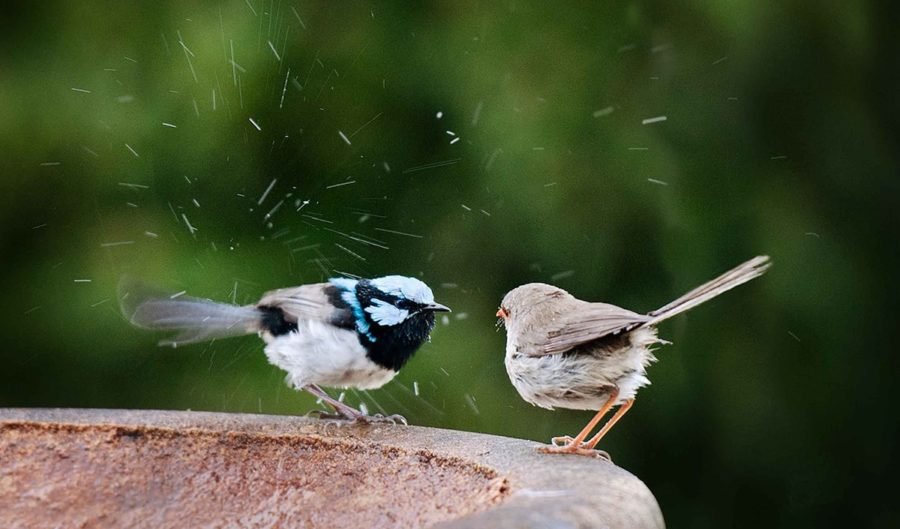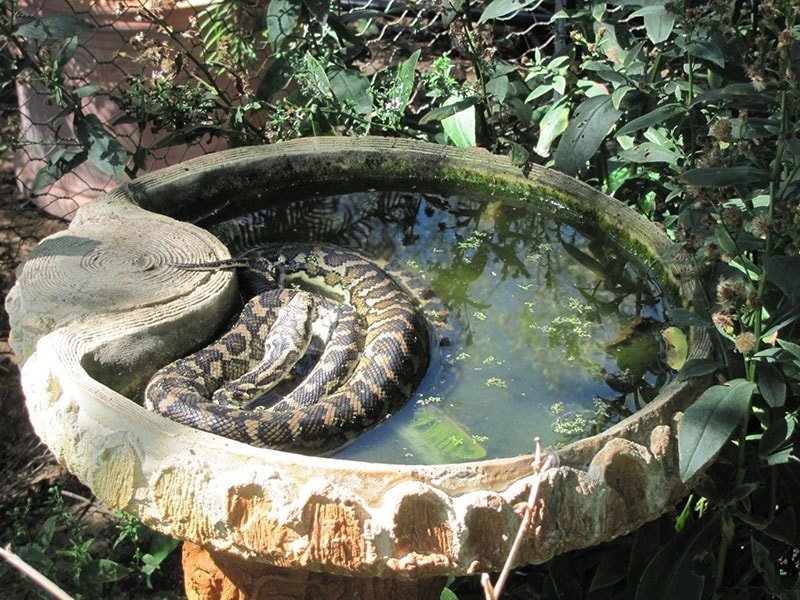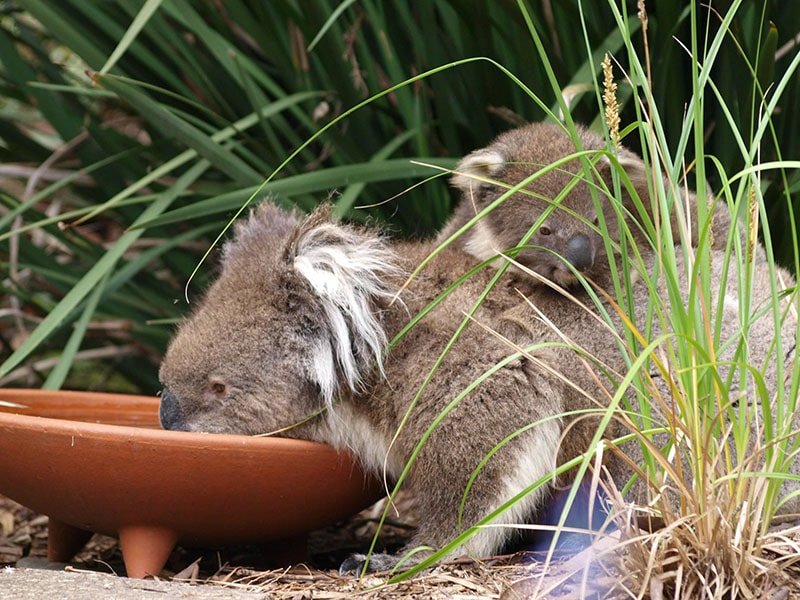A guide to helping our native animals with the heat this summer

IN AN INCREASINGLY urbanised environment it’s important we turn our backyards into havens for native wildlife, says Grainne Cleary, a researcher at the School of Life and Environmental Sciences at Deakin University.
Grainne has spent a lot of time observing the wildlife that visits backyards: how they use it, how often they stay and what piques their interests. However, when the sweltering Australian summer heat sets in water becomes the animals’ main priority.
“We know that a lot of animals use water in backyards especially in this increasingly urbanised world, which has coincided with huge losses of vegetation, meaning there isn’t a lot of shade either,” says Grainne.
“What we’re finding out through the use of cameras is that a lot more animals are drinking from bird baths. A huge number of birds as well as frogs, lizards, snakes and even koalas are using these baths.”
SEE MORE: How to attract your favourite birds to your garden
“Birds are not fussy”: baths don’t have to be elaborate
The image of pedestal baths – the one’s you see in those elaborate, well-kept gardens – can make the idea of having a bird bath in your own backyard intimidating. However, Grainne says you can make a bird bath out of almost anything.
“Some of my best birds turn up on the pots or old buckets that I’ve left out, which the birds will then use very quickly,” she says.
“If you don’t want to commit to providing water all the time but it’s a very hot day, just use a pot, place a rock in it or put a stick across it so they can dip in it and come back out again. Any kind of pots, pans and bowls are fine. Birds are not fussy.”
Where to put your bird bath
According to Grainne, when it comes to bird bath placement you have to think like an animal, to ask yourself “Where would I like to bathe or get a drink?”
“If you do provide water for birds, don’t just place it in the centre of your lawn. You need to put it in a place where the birds can feel comfortable bathing,” she says.
“If you put it in the middle of a grassy area, with no trees or anything you might get your bigger birds, maybe an echidna, but we want to give smaller birds a drink as well.”
For smaller birds, Grainne says it’s even better if you can provide a rock on which the the birds can dry off. “When smaller birds get really wet they find it hard to fly really quickly. If you have a rock they can dry off on for a bit and then fly off, that’s great.”

(Image Credit: Grainne Cleary)
Try providing as many baths as possible
Grainne recommends putting out a range of different baths to suit the variety of animals that may want to take dip. While birds have been known to queue for their turn, the odd snake looking to cool off may not be so patient.
“We’ve [also] found that native bees use these baths. People can get upset about that because they want birds, but we need to look after the bees as well and you can have more than one bath,” she says.
SEE MORE: The secret world of bird baths
“It’s good to observe which birds are using what bath, which ones prefer something elevated and which one’s prefer something on the ground. You have your rainbow lorikeets, miners and honey eaters taking water from an elevated bird bath and owning that, then you have the smaller birds like the superb-fairy wrens taking water from a bird bath on the ground, close to some vegetation. The important thing is to watch and learn.”
Bonus tip: Grainne says adding a little ice into the water is a great way to cool down the temperature and provide a little fun for the birds.

(Image Credit: Grainne Cleary)
Regularly give your baths a good scrub
Keeping you bird baths in the sun is a good way to kill disease, but this also causes quick evaporation so checking the water levels from time to time is important.
On the other hand, Grainne says that for birds trying to escape the heat in dryer months, placement in the sun isn’t the best idea so regular cleaning is the next best thing.
“Regularly give them a good scrub, with only a tiny bit of detergent. Stagnate water can get disease growing in it, so make sure you’re keeping an eye on it,” she says.
Knowing when a bird needs water
Grainne says that when a bird has a gaping mouth and is flaring its wings, this usually means it’s trying to cool down or is very thirsty, so providing a nearby water source is the first step.
However, Grainne adds that for those who have formed close relationships with a particular bird and know their behaviours, you can give them something a little extra. “Because birds are so long lived some people are probably looking at the same magpie for many years and they’ll know when that magpie is very hot,” she says.
“If you know the individual bird, giving them a spray of water with one of those garden bottles is something they enjoy. But again, these are the birds you know. Don’t go around spraying any old bird in the face.”
Helping koalas
If you live an area where there are high populations of urban koalas, such as in parts of Queensland, there are some important steps you can take to ensure their safety.
“People have been looking into putting water up trees for koalas, so if you really want to be inventive and you think you have a koala or maybe even some shy birds, think about some contraptions you could make that would be stable in a tree,” says Grainne. “Recently I’ve seen people put water in a plastic tub and securing it to a branch with a cable tie.”
Grainne adds that keeping domestic pets at bay is also important. “One of the biggest killers of koalas is domestic dogs. If you have a pool in your back garden, you have a lot of urban koalas and you have dog, on a hot day there’s a good chance that a koala will be tempted to go down into your garden and that’s when we have koalas being eaten by domestic dogs. Having water in a safe spot or keeping your pets inside will help prevent an attack.”

(Image Credit: Grainne Cleary)

